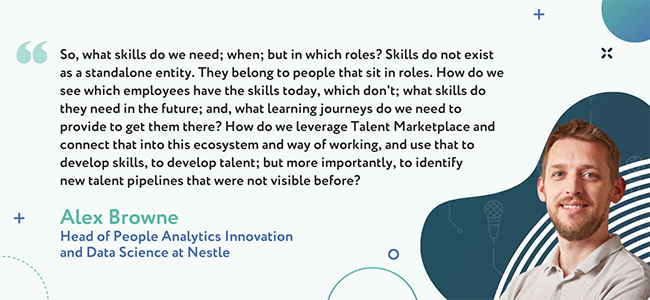2024: Welcome to The Future of Strategic Workforce Planning

The Future of Strategic Workforce Planning
The future of workforce planning is uncertain yet filled with opportunity. Organizations must be willing to embrace change and innovation in their workforce planning strategies to stay ahead of the curve and remain competitive. To do this, they must embrace a new era of democratization, prioritize integrating skills into strategic initiatives, and commit to embracing change and innovation in their workforce plans.
Democratizing Strategic Workforce Planning
Democratizing Strategic Workforce Planning is a pivotal step toward establishing a more agile, flexible, and successful organization. For too long, SWP has been the domain of a handful of experts, limiting the perspectives and insights that can be brought to bear on an organization's future outlook. By democratizing SWP, all areas of an organization can participate in building a shared understanding of possible futures and aligning around a common vision. This means creating a comprehensive view of all the factors that impact an organization's workforce needs - from product launches and market entry strategies to remote work and office reopening plans.
Democratizing SWP is about unlocking new avenues for growth, innovation, and profitability by empowering HR, Finance, Strategy, and other members of the C-suite to collaborate and make informed decisions based on real-time data. In doing so, we acknowledge that while experts are necessary to build the models, businesses need to be able to use and analyze the data themselves.
By leveraging technology-enabled SWP platforms, organizations can drive better business outcomes, enabling them to react in a proactive, data-driven, and strategic way to changing market conditions. At eQ8, we believe that democratizing SWP is the key to bridging the gap between the front-line workforce, management, and leaders to ensure that the organization remains competitive and relevant in today's complex business environment, and it shows in our offering, both current and yet to come.

Integrating Skills into Planning Cycles
With the rise of technology and automation changing the nature of work, it has become increasingly important for organizations to identify skill requirements needed for success. To do this effectively, they must integrate skills into all aspects of their workforce planning cycles, from recruitment and selection through onboarding, training, career development, performance management, as well as succession planning. In addition to considering the technical skills required for a particular role or task, organizations should also focus on identifying soft skills which are essential for employee engagement and retention.

Embracing Change & Innovation in Workforce Planning
Organizations should also strive to be agile when it comes to their workforce planning strategies. By embracing change and innovation throughout the process, they will be better positioned to anticipate future trends in an ever-evolving business environment. This could include proactively exploring ways of leveraging technology such as AI and machine learning tools to enhance traditional processes such as data collection or analysis. Additionally, organizations should strive to foster an environment where employees feel empowered to suggest potential solutions or ideas that could benefit the organization as a whole—and implement those ideas whenever possible.
While there may be many challenges surrounding strategic workforce planning today, there are also a multitude of opportunities available if approached strategically with an open mind toward embracing change and innovation within the organization’s culture. Through strategic workforce planning, organizations can optimize their talent pool, create effective teams, reduce overhead costs, and develop a competitive edge.
By embracing these changes early on, an organization will be better positioned not just for today but also for tomorrow’s business landscape—no matter what shape it takes down the road.
Unlocking Your Organization's Potential
The power of workforce planning is one of the most important aspects of organizational growth and success. By unlocking the potential of your organization's workforce, you can ensure that your business is taking advantage of all available resources.
By implementing workforce planning in their organization, leaders will be able to increase productivity, efficiency, and engagement among their employees. Ultimately, unlocking the power of workforce planning can lead to greater success for businesses as they move into the future. It is up to each organization to take action and implement these strategies to realize their full potential and maximize their success.
With eq8's tailored approach, organizations can rest assured that their transformation initiatives will be successful and their workforce will be optimized for future growth. Start your journey to long-term success today by contacting eq8's team of experts for next steps. Schedule your demo today.


.png?width=1000&height=154&name=SWP-Blog-CTA-insert1%20(2).png)
